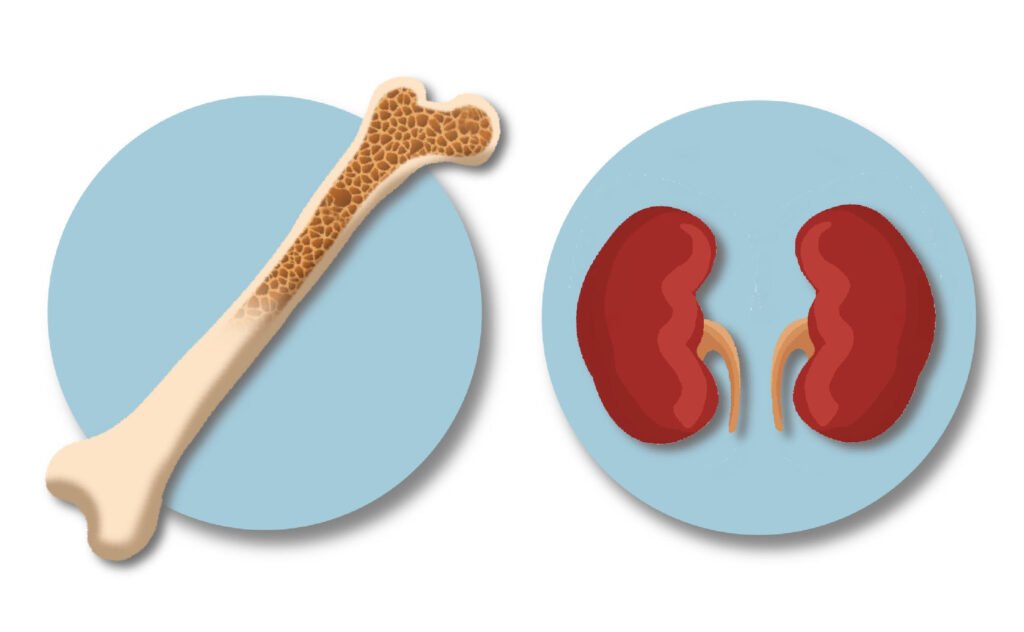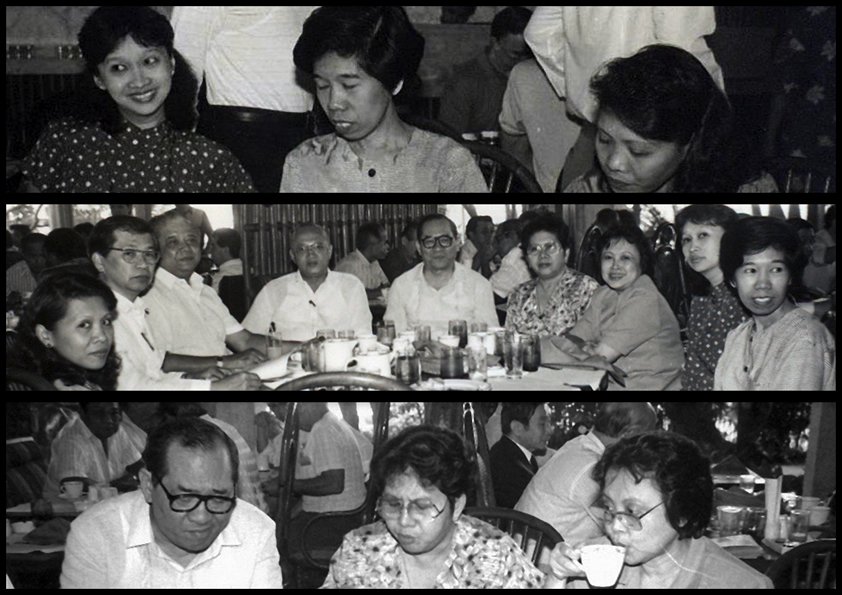
Margaret C. Encarnacion-Fernandez, MD, FPCP, DPCEDM
Osteoporosis and Chronic Kidney Disease
Osteoporosis is one of the leading concerns in postmenopausal women, and this risk increases among those with chronic kidney disease (CKD). Treatment is also of interest because some first line and readily available agents, such as bisphosphonates, are not recommended for use in those with an estimated glomerular filtration rate (eGFR) of <30-35 mL/min.1

Romosozumab in Osteoporosis
Two studies have previously shown the efficacy and safety of romosozumab in osteoporosis. The Fracture Study in Postmenopausal Women with Osteoporosis (FRAME) in 2016 and the Active-Controlled Fracture Study in Postmenopausal Women with Osteoporosis at High Risk (ARCH) Trial in 2017 were phase 3 randomized controlled trials involving 7180 and 4093 postmenopausal women with osteoporosis, respectively. 2,3
The FRAME trial showed significant improvements in spine and hip bone mineral density (BMD) and reduced risk of new vertebral fractures and clinical fractures in patients who received romosozumab 210mg subcutaneously once a month for a year followed by denosumab every 6 months, compared to those who received placebo followed by denosumab.2 In ARCH, there was significantly lower risk of new vertebral, nonvertebral, and clinical fractures in those who received romosozumab monthly for 1 year followed by alendronate 70mg weekly thereafter, when compared to those who received alendronate only. There was also significantly greater gain in BMD in the lumbar spine, total hip, and femoral neck in the romosozumab-alendronate group. 3
Post hoc Analysis of Romosozumab in mild-to-moderate CKD
In an update last August 2022, Miller et al published their post hoc analysis of both FRAME and ARCH trials focusing on those with mild and moderate renal dysfunction. Patients were stratified according to their baseline kidney function: normal (eGFR ≥90 mL/min), mild reduction (eGFR 60–89 mL/min), or moderate reduction (eGFR 30–59 mL/min). At baseline, 69% in FRAME and 61% in ARCH had mild CKD, and 19% in FRAME and 24% in ARCH had moderate CKD.1
Both trials showed significantly increased BMD from baseline across all categories of kidney function and across all three anatomical BMD samples after 12 months of romosozumab compared to those who had placebo or alendronate. In FRAME, femoral neck BMD increase was similar for those with normal kidney function compared to those with CKD. In ARCH, lumbar spine and femoral neck BMD increase were similar in normal GFR and CKD patients, whereas total hip BMD showed a lesser degree of BMD improvement.1
Romosozumab significantly reduced the relative risk of new vertebral fracture across all categories of kidney function. In FRAME, the relative risk reduction of new vertebral fractures was 84% in normal kidney function, 70% in mild CKD, and 72% in moderate CKD. In ARCH, the relative risk reduction of new vertebral fractures was 57% in normal kidney function, 19% (p=0.39) in mild CKD and 51% in moderate CKD. The study was not able to elaborate on the possible cause of nonsignificant reduction in fracture risk in those with mild CKD. There was also a significant reduction in risk of nonvertebral fractures by 26% for both trials and was consistent among all categories of kidney function.1
Both trials were comparable in incidence of treatment-emergent and serious adverse events across all categories of kidney function. No significant differences in kidney function were seen in both trials. 72% to 85% with mild-to-moderate CKD at baseline remained in the same subgroup after 12 months.1
Romosozumab in Severe CKD
There is a lack of sufficient data on romosozumab in those with severe CKD. Although the 29 participants in both FRAME and ARCH who had eGFR of 15-29 mL/min were excluded in the post hoc analysis, there were no serious adverse events involving hypocalcemia noted in this subgroup. Only the FRAME trial demonstrated a positively adjudicated CV event in one patient in the romosozumab group.1
An observational study by Sato et al in 2021 included 76 patients undergoing hemodialysis with high risk of fracture and were given romosozumab once a month for 1 year. Results showed BMD increased significantly from baseline at the lumbar spine and femoral neck at 1 year in the romosozumab group. Fragility fractures occurred in 3.8% of the romosozumab group versus 5.5% in the untreated group. Importantly, no increase in CVD adverse events were noted during the study. These show a potential use of romosozumab in dialysis patients with osteoporosis.4
Overall, results are promising as they provide significant benefit in patients with osteoporosis and CKD, particularly when approved for use in those with eGFR <30mL/min or on dialysis, as bisphosphonates- the most available option- is not recommended. Cost, however is a limiting factor and thus cost-benefit ratio must be taken into consideration when used.
Table 1. Relative risk reduction of new vertebral fractures in FRAME Trial and ARCH Trial according to baseline kidney function.
| Baseline kidney function (eGFR) | Relative risk reduction (95% CI, p-value) | |
| FRAME Trial | ARCH Trial | |
| Normal eGFR
(≥90 mL/min) |
84% (95% CI 30–96, p = 0.005) | 57% (95% CI 1–81, p = 0.04) |
| Mild CKD
(eGFR 60–89 mL/min) |
70% (95% CI 40–85, p < 0.001) | 19% (95% CI -28-49, p=0.39) |
| Moderate CKD
(eGFR 30–59 mL/min) |
72% (95% CI 14–91, p = 0.017) | 51% % (95% CI 5–75, p = 0.04) |
References:
- Miller PD, Adachi JD, Albergaria BH, Cheung AM, Chines AA, Gielen E, Langdahl BL, Miyauchi A, Oates M, Reid IR, Santiago NR, Vanderkelen M, Wang Z, Yu Z. Efficacy and Safety of Romosozumab Among Postmenopausal Women With Osteoporosis and Mild-to-Moderate Chronic Kidney Disease. J Bone Miner Res. 2022 Aug;37(8):1437-1445. doi: 10.1002/jbmr.4563. Epub 2022 May 20. PMID: 35466448.
- Cosman F, Crittenden DB, Adachi JD, Binkley N, Czerwinski E, Ferrari S, Hofbauer LC, Lau E, Lewiecki EM, Miyauchi A, Zerbini CA, Milmont CE, Chen L, Maddox J, Meisner PD, Libanati C, Grauer A. Romosozumab Treatment in Postmenopausal Women with Osteoporosis. N Engl J Med. 2016 Oct 20;375(16):1532-1543. doi: 10.1056/NEJMoa1607948. Epub 2016 Sep 18. PMID: 27641143.
- Saag KG, Petersen J, Brandi ML, Karaplis AC, Lorentzon M, Thomas T, Maddox J, Fan M, Meisner PD, Grauer A. Romosozumab or Alendronate for Fracture Prevention in Women with Osteoporosis. N Engl J Med. 2017 Oct 12;377(15):1417-1427. doi: 10.1056/NEJMoa1708322. Epub 2017 Sep 11. PMID: 28892457.
- Sato M, Inaba M, Yamada S, Emoto M, Ohno Y, Tsujimoto Y. Efficacy of romosozumab in patients with osteoporosis on maintenance hemodialysis in Japan; an observational study. J Bone Miner Metab. 2021 Nov;39(6):1082-1090. doi: 10.1007/s00774-021-01253-y. Epub 2021 Jul 29. PMID: 34324082.



